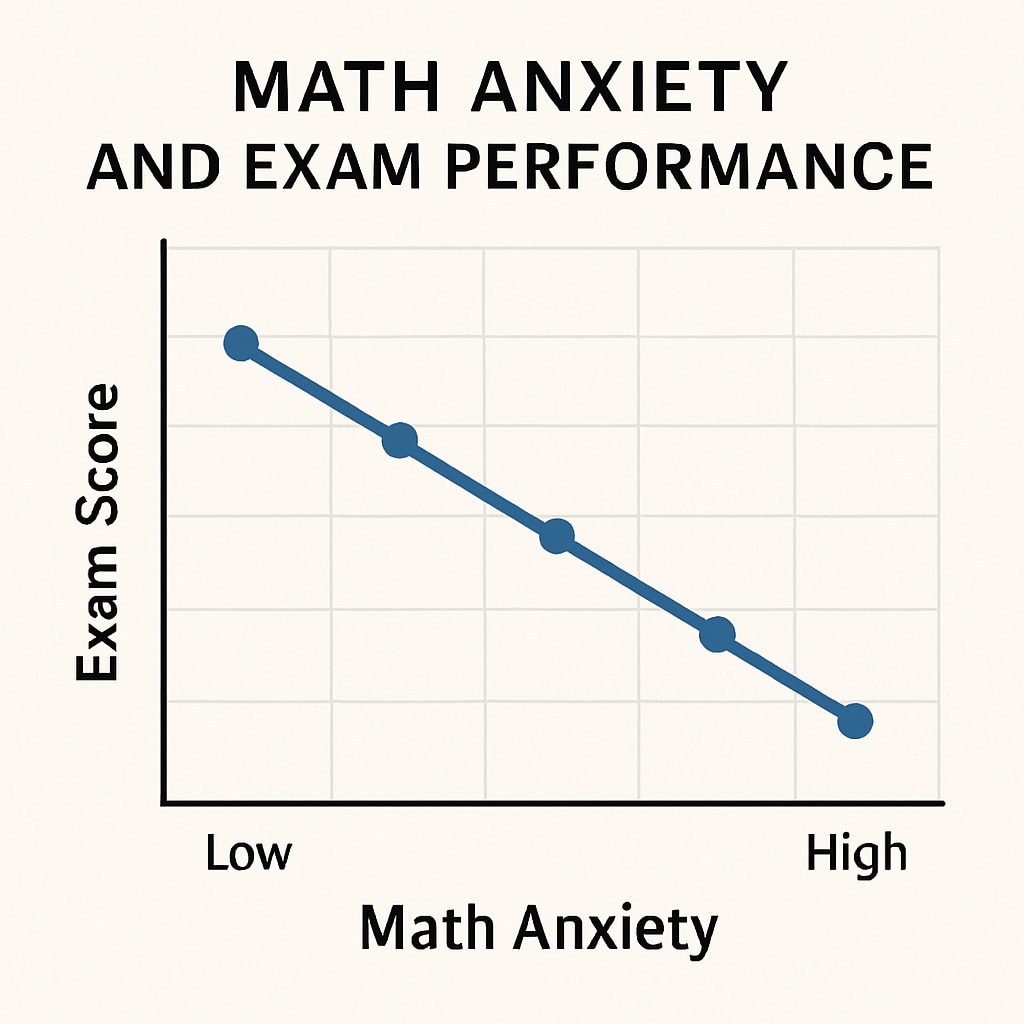Math anxiety, exam pressure, and the fear of multiple-choice questions are common challenges students face, especially in high school. These factors can significantly affect academic performance, leading to low confidence and even avoidance of math-related tasks. In this article, we will delve into the origins of math anxiety, analyze how it impacts students during exams, particularly in the multiple-choice section, and provide actionable strategies to help students regain their confidence and improve their results.
Understanding the Roots of Math Anxiety
Math anxiety is a psychological phenomenon characterized by feelings of tension and worry that interfere with the ability to perform math-related tasks. This condition often starts early in a student’s academic journey and can be exacerbated by negative experiences, such as poor grades or criticism from teachers or peers. According to the Wikipedia article on math anxiety, it is not only a mental challenge but can also manifest physically, with symptoms like sweating, rapid heartbeat, or nausea during exams.
One specific aspect of math anxiety is the fear of multiple-choice questions. These types of questions often feel intimidating because they require quick decision-making and a high level of accuracy. Students may struggle with second-guessing their answers, which leads to increased stress and reduced performance.

How Exam Pressure Amplifies Math Anxiety
Exam pressure further intensifies math anxiety. When students sit down to take a test, their focus often shifts from solving problems effectively to worrying about the consequences of failure. This heightened stress can block cognitive processes that are essential for problem-solving, such as logical reasoning and memory recall.
Multiple-choice questions, in particular, can be tricky because they often include similar-looking options meant to confuse students. As a result, students experiencing math anxiety may feel overwhelmed by the choices, leading to hesitation or even guessing. This cycle of doubt and error can reinforce their negative perception of math exams.

Practical Strategies to Conquer Math Anxiety
Overcoming math anxiety and exam-related stress requires a combination of mental preparation, effective study habits, and test-taking techniques. Below are some proven strategies:
- Practice Mindfulness: Techniques such as deep breathing and meditation can help calm the mind before and during an exam. These practices reduce the physiological symptoms of anxiety and improve focus.
- Understand the Question Patterns: Familiarize yourself with common multiple-choice formats by practicing past papers. This helps reduce the fear of the unknown.
- Use Time Management Skills: Allocate a specific amount of time per question and stick to it. If uncertain about an answer, move on and return to it later.
- Seek Help Early: Work with a tutor or teacher to clarify difficult concepts before exams. Addressing gaps in understanding builds confidence.
- Challenge Negative Thoughts: Replace thoughts like “I’m bad at math” with “I’m improving every day.” Positive affirmations can significantly change your mindset.
By implementing these strategies, students can gradually reduce their fear of math and improve their performance in exams. For additional tips, explore resources like Britannica’s education section for effective learning techniques.
Regaining Confidence: Building a Positive Math Mindset
Confidence plays a key role in overcoming math anxiety. Students should celebrate small successes, such as solving a challenging problem or completing a practice test. These achievements reinforce the belief that math skills can be improved with effort and persistence.
Parents and educators also have a role in fostering a supportive environment. Encouragement, rather than criticism, can motivate students to keep trying, even when faced with setbacks. Moreover, group study sessions or peer tutoring can normalize struggles and promote collaborative learning.
In conclusion, math anxiety, exam pressure, and the fear of multiple-choice questions are challenges that many students face. However, with the right strategies and mindset, it is entirely possible to overcome these obstacles, regain confidence, and excel academically.
Readability guidance: This article uses short paragraphs and lists to summarize key points. Active voice is prioritized, and transitions help readers follow the flow of ideas. Overcoming math anxiety requires a step-by-step approach, as described above.


